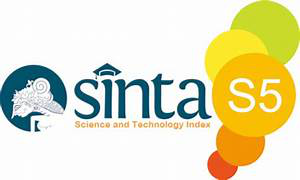BAGAIMANA KOMUNIKASI ANTARA PENGELOLA DENGAN PEMERINTAH DALAM MEMBANGUN CITRA DESTINASI KAMPUNG WISATA TEMATIK?
Abstract
This study aims to determine the role and communication relationship patterns of the Bogor City Department of Tourism and Culture (Disparbud) in establishing communication with the community around the Mulyaharja Tourism Village in managing tourism in their area. The theory of Relationship Management is used by researchers as an effort to systematize the analysis and discussion of the findings of this study. The design of this research is descriptive qualitative. Data collection techniques used include interviews, observation, documentation, and literature study. The results of the study indicate that the communication established by the Bogor City Department of Tourism and Culture to external parties which are the managers of tourist villages and the tourism driving group (Kompepar) is two-way. The communication pattern formed between internal and external parties is a secondary communication pattern, where the manager of the tourist village is a medium for conveying messages to Kompepar. The branding efforts carried out by the government and Kompepar, namely by marketing the Mulyaharja Thematic Tourism Village through social media such as Instagram and Youtube.
Keywords
References
Ardianto, E & Soleh S. (2004). Dasar-Dasar Public Relations. Bandung: Remaja Rosdakarya.
Effendy, O U. (2003). Ilmu Teori dan Filsafat Komunikasi. Bandung: PT Citra Aditya Bakti.
Firdaus, A. M. (2020). Kucurkan Hibah Rp 2,8 Miliar, Pemkot Bogor Kembangkan Wisata Alam di Mulyaharja. Kotabogor.Go.Id. https://kotabogor.go.id/index.php/show_post/detail/100151
Kloczko-Gajewska, A. (2014). Can We Treat Thematic Villages As Social Innovations? Journal of Central European Green Innovation, 2(3), 4959.
Kriyantono, R., & Sadiyah, H. (2018). Kearifan Lokal dan Strategi Komunikasi Public Relations di BUMN dan Perusahaan Swasta. Jurnal ILMU KOMUNIKASI, 15(2), 171. https://doi.org/10.24002/jik.v15i2.1480
Moleong, LJ. (2007). Metodologi Penelitian Kualitatif. Edisi Revisi. Bandung: Remaja Rosdakarya
Siregar, M. R. A., & Amaliasari, D. (2019). COMMUNICATING BOGOR CITY AS CITY HERITAGE THROUGH. 03(01), 2731. https://journal.unpak.ac.id/index.php/jhss/article/view/1097/938#
Siregar, M. R. A., & Jayawinangun, R. (2019). Komunikasi Kota Hexagon Di Media Sosial. Jurnal Sosial Humaniora, 10(2), 120. https://doi.org/10.30997/jsh.v10i2.1978
Rafi, M. (2019). Fungsi Public Relations Dalam Mengkomunikasikan Media Online Medcom.Id. Jurnal Visi Komunikasi, 18(2), 113126.
Sugiyono. (2012). Memahami Penelitian Kualitatif. Bandung: Alfabeta.
Sukmaraga, A. A., & Nirwana, A. (2016). City Branding: Sebuah Tinajuan Metodologis dengan Pendekatan Elaboratif, Praktis, dan Ilmiah. Journal of Art, Design, Art Education & Culture Studies, 1(1), 119.
Sunaryo, Bambang. (2013). Kebijakan Pembangunan Destinasi Pariwisata Konsep dan Aplikasinya di Indonesia. Yogyakarta : Gava Media.
Tamara, A. P., & Rahdriawan, M. (2018). Kajian Pelaksanaan Konsep Kampung Tematik di Kampung Hidroponik Kelurahan Tanjung Mas Kota Semarang. Jurnal Wilayah Dan Lingkungan, 6(1), 40. https://doi.org/10.14710/jwl.6.1.40-57
DOI: 10.33751/jpsik.v6i1.5313
Refbacks
- There are currently no refbacks.

This work is licensed under a Creative Commons Attribution-ShareAlike 4.0 International License.












